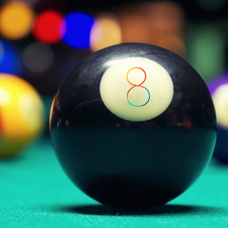Eight for 8: An iOS 8 Tip a Day, 8 Days in a Row (Day Eight)
Listen to this blog post!
Eight for 8, Day Eight.
I make a point of turning off my iPhone's ringer when I am in someone else's office or home. Occasionally I forget to do it, and when a call comes in I rush to slide the switch to "mute." That's what happened last week, but when I muted the phone, the ringing didn't stop!
Turns out that the ringing was coming from my iPad. My iPad! The one without any cellular service (aka "the cheap one"). The one that doesn't do anything internet-y without WiFi. The one that most definitely is NOT A PHONE. All of a sudden, without any warning, my iPad thinks it's a phone.
It took me by surprise but once I figured out how it worked, I liked it.
iOS 8 Tip #8: Make and Answer Phone Calls From Your iPad
So how does it work, anyway?
Well, it works like this. If your iPhone and iPad are both on iOS 8, and they both are on the same WiFi network, and they both are signed into the same iCloud account, and they both have "iPhone Cellular Calls" turned on in the Settings, then your iPad is going to ring when someone calls your iPhone. You can answer the call on your iPad and tap the Speaker Phone button and have a little chat, all from your iPad, while your iPhone sits in the charger in another room, or maybe in your purse.
Here's what it looked like on my iPad when my mom called tonight. Repeating: on my iPad. Let that sink in for a minute.
You can also initiate a call from your iPad. The calling is actually done by your iPhone, but from the point of view of the person holding and talking to the iPad, it feels like the iPad does the work. The first time you do this you'll shake your head in wonder. Now you can while away the evening playing "Words with Friends" on your iPad and when a call comes in, you just answer the call right there. I'm telling you, it's absolutely nuts.
I did some experiments here and was able to make and receive calls on my old iPhone 4s (upgraded to iOS 8), even though it no longer has service. It meets the requirements I wrote above-- iOS 8, same WiFi as the (activated) iPhone, signed into the same iCloud account as the (activated) iPhone, iPhone Cellular Calls turned on-- and by golly it's making phone calls again. I am not sure how I am going to put this to use but if I do something cool with it of course I will write it up (and if you're on the mailing list you will be among the first to know about it).
Here's a screenshot from my old iPhone 4s, the one that's been sitting around since being replaced by the 5s. It shows a call coming in.
Here's what the Settings need to look like-- on your iPhone, and on your iPad-- if you want this to work. (If you turn off FaceTime the iPhone Cellular Calls option goes away.) These are FaceTime settings, so go to Settings/FaceTime on your iPhone and on your iPad and turn those things on, if they aren't on already.
<
When a call comes in, and you answer it on your iPad (or on your old no-service iPhone, or even on a newer iPod Touch), your "real" iPhone will show the green bar across the top, as it does whenever you're making a call. That's showing you that the phone is actually "in use." If you tap that green bar, the call will be transferred smooth as you please to your iPhone, and the iPad will simply let go. (There does not appear to be a way to pass a phone call from your iPhone to your iPad. You can answer the call on the iPad and pick it up later on the iPhone but not the other way around. FYI.)
If this all sounds vaguely familiar it's probably because Apple showed a similar feature for the Mac in June when it demonstrated the upcoming "Yosemite" Mac OS at the World Wide Developers Conference. With Yosemite, you can look up a phone number in your Mac's address book, or click a phone number in an email on your Mac, and your iPhone will make the call... but the sound comes out of the Mac, it uses your Mac's microphone, and you never touch the iPhone. That's exactly what we've got going with our iPad, assuming they're on iOS 8.
And THAT, my friends, is iOS 8 Tip #8: An iOS 8 Tip a Day, 8 Days in a Row. Please consider signing up for our mailing list, and note the links below to the rest of the tips in the series.
Links:- iOS 8 Tip #1: The Two-Finger Down-Swipe
- iOS 8 Tip #2: Actionable Notifications
- iOS 8 Tip #3: Audio Texts and Video Insta-Selfies
- iOS 8 Tip #4: Faster Typing, Thanks to the Predictive Keyboard
- iOS 8 Tip #5: Hands-Free Siri
- iOS 8 Tip #6: See the Battery Usage, per App
- iOS 8 Tip #7: Set the Camera's Focus and Exposure Independently
- iOS 8 Tip #8: Make and Answer Phone Calls From Your iPad





















